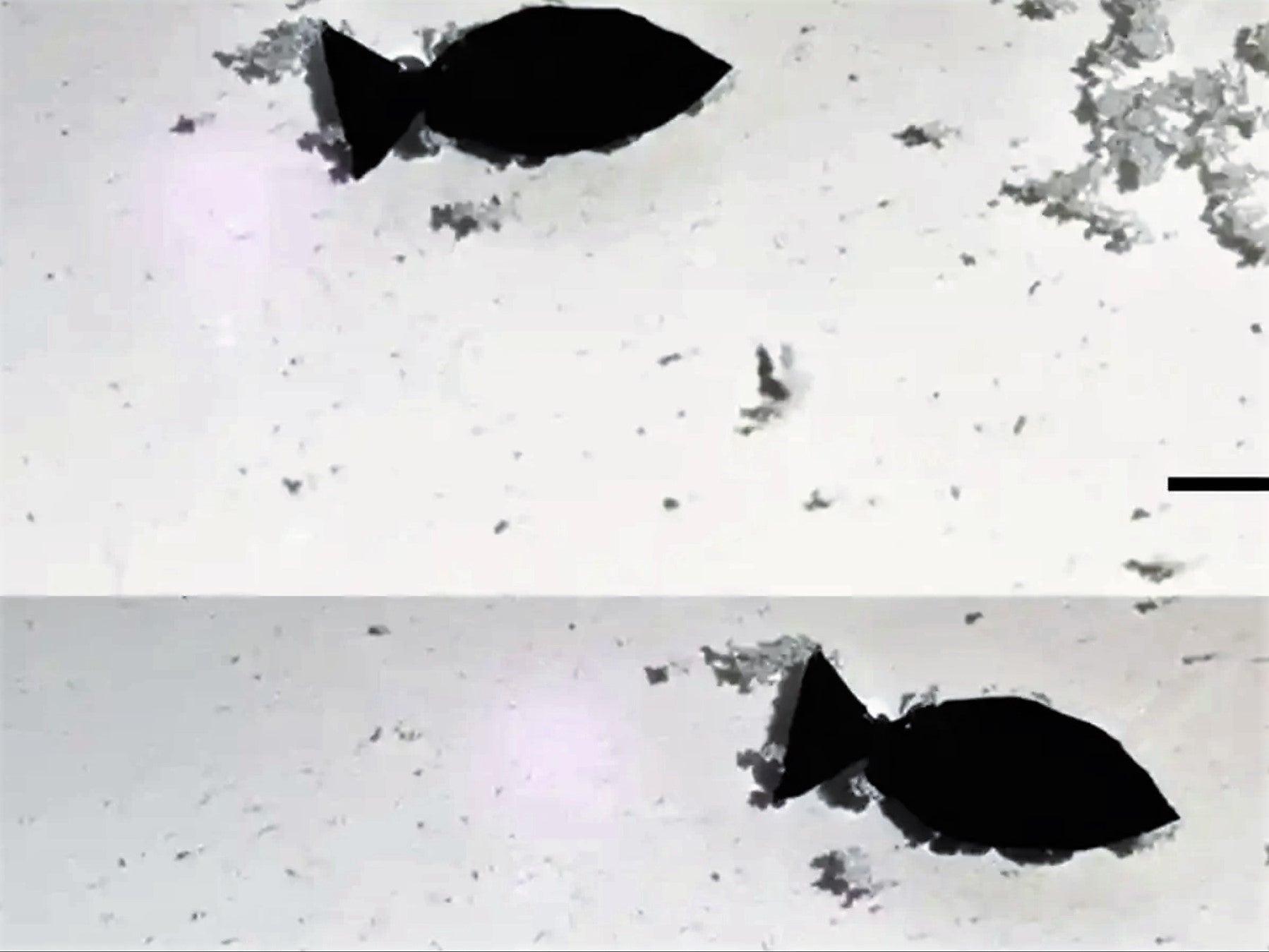Robot fish invention gobbles microplastics to clean oceans and save real fish
If accidentally eaten by other fish, the robofish can be digested without harm

Researchers in China have developed a school of robot fish that ingest microplastics as they swim around.
The team from Sichuan University in southwest China hope to use the robofish to clean up polluted oceans and save the lives of living fish, while also providing real-time feedback about maritime pollution.
Soft to touch and just 1.3 centimetres (0.5 inch) in size, these robots already suck up microplastics in shallow water.
The team aims to enable them to collect microplastics in deeper water and provide information to analyse marine pollution in real time, said Wang Yuyan, one of the researchers who developed the robot.
“We developed such a lightweight miniaturised robot. It can be used in many ways, for example in biomedical or hazardous operations, such a small robot that can be localised to a part of your body to help you eliminate some disease.”
The black robot fish is irradiated by a light, helping it to flap its fins and wiggle its body. Scientists can control the fish using the light to avoid it crashing into other fish or ships.
If it is accidentally eaten by other fish, it can be digested without harm as it is made from polyurethane, which is also biocompatible, Wang said.
The fish is able to absorb pollutants and recover itself even when it is damaged. It can swim up to 2.76 body lengths per second, faster than most artificial soft robots.
“We are mostly working on collection (of microplastics). It is like a sampling robot and it can be used repeatedly,” she said.
The US National Oceanic and Atmospheric Administration (NOAA) define microplastics as any fragments of plastic that are less than 5mm in length. They include microfibres from clothing, plastic beads from cosmetics, as well as degraded plastics from food packaging and other sources.
A 2019 study from the EU found that microplastics are present in every part of the environment, though the full risks to marine life are still unknown.
They have been found embedded in respiratory and digestive tracts of fish, crabs and other crustaceans, which can then be passed on to animals who eat them – including humans.
Additional reporting by agencies.
Subscribe to Independent Premium to bookmark this article
Want to bookmark your favourite articles and stories to read or reference later? Start your Independent Premium subscription today.

Join our commenting forum
Join thought-provoking conversations, follow other Independent readers and see their replies